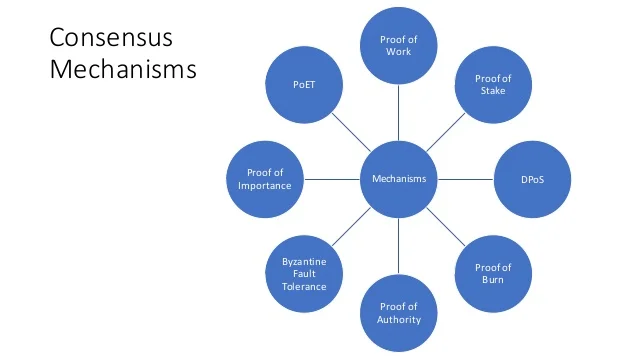Understanding Blockchain Consensus Mechanisms
What is a Blockchain Consensus Mechanism?
A blockchain consensus mechanism is the process by which all participating nodes in a network agree on the status of a transaction. It is used to achieve consensus across the network, ensuring that all parties can trust the information stored in the ledger.
In simple terms, consensus mechanisms are algorithms that enable secure, tamper-proof transactions between two parties without the need for a third-party intermediary. This allows for faster transactions, avoiding the delays associated with traditional banking or payment processing services.
Types of Blockchain Consensus Mechanisms
The most popular consensus mechanisms include Proof of Work (PoW), Proof of Stake (PoS), Delegated Proof of Stake (DPoS), and Byzantine Fault Tolerance (BFT). There are also other methods such as Proof of Activity (PoA), Proof of Burn (PoB), and Proof of Authority (PoA).

Proof of Work (PoW)
Proof of Work (PoW) is a blockchain consensus mechanism that leverages computing power to secure the network and validate transactions. Miners compete to solve a cryptographic puzzle, and the miner who solves the puzzle first is rewarded with newly minted coins or transaction fees. This system makes it difficult for malicious actors to control the network, as they would need to control 51% of the network’s computing power in order to do so.
Proof of Stake (PoS)
Proof of Stake (PoS) is a consensus algorithm that uses the stake, or amount of tokens held by a node, to determine the right to validate the next block. In PoS, a validator's chances of creating a new block depend on how many coins they hold compared to other validators. This reduces the cost and energy expenditure associated with PoW, as miners do not have to compete for computational power. Additionally, PoS is more Secure and efficient than PoW, as it eliminates the need for miners to expend energy on solving cryptographic puzzles.
Delegated Proof of Stake (DPoS)
Delegated Proof of Stake (DPoS) is a consensus algorithm where token holders vote for delegates who act as witnesses to validate new blocks. These delegates are voted in and out, incentivizing them to act in the best interests of the network. DPoS is considered a fast and efficient method of achieving consensus, as token holders can cast their votes quickly and securely.
Byzantine Fault Tolerance (BFT)
Byzantine Fault Tolerance (BFT) is a distributed consensus protocol that ensures that all participants in a network come to an agreement on the state of the ledger, even when some participants are untrustworthy. BFT enables the network to continue operating when some nodes fail, as well as when some participants become malicious. This makes it an attractive choice for mission-critical applications.
Conclusion
Blockchain consensus mechanisms are versatile algorithms that enable secure and efficient transactions on distributed networks. They provide a way for networks to reach consensus on the state of the ledger without relying on a third-party intermediary. Different types of consensus mechanisms have different levels of security, cost, and efficiency, so it’s important to choose the right one for your application.

